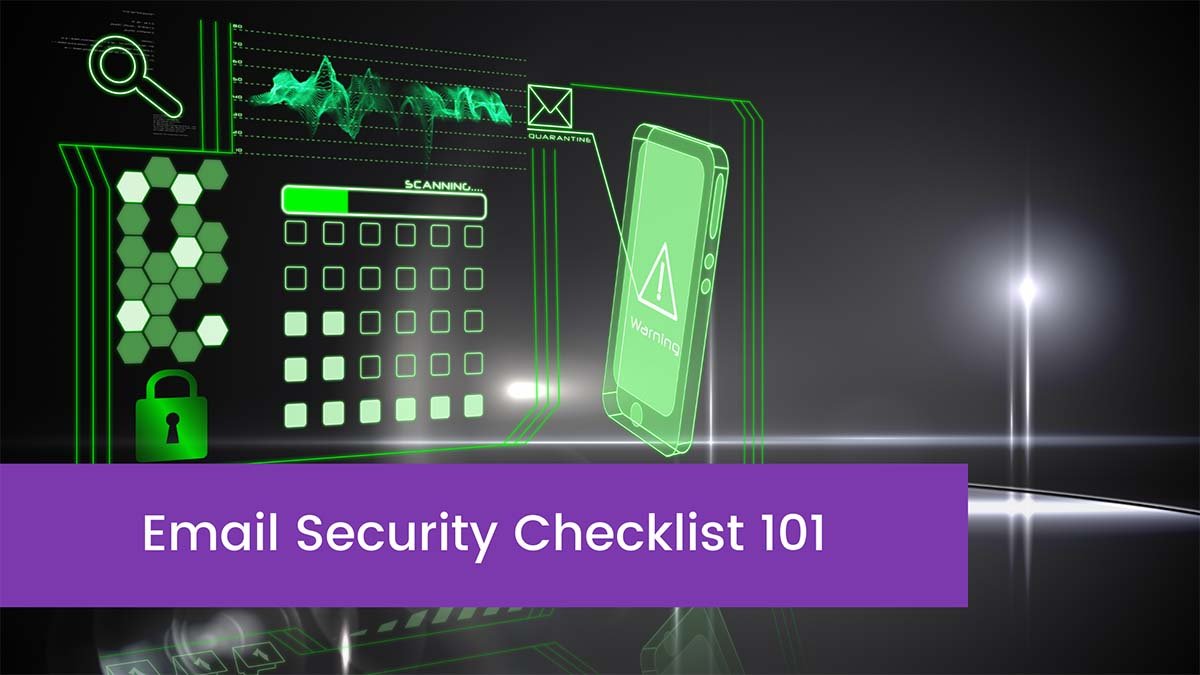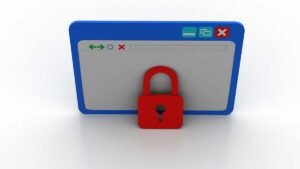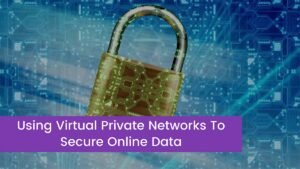Email security is the practice of keeping incoming and outgoing emails of an organization safe from unauthorized access, loss, and data stealing. Emails are often the first point of contact for hackers to inject malware and steal sensitive information.
Typical email servers that are used by the general public are not very secure for business or personal use. Email security is maintained to ensure that the content of the emails stays within the bounds of authorized access and doesn’t get stolen by attackers through malware and phishing attacks.
Why Do You Need Email Security
Cyber-attacks, such as phishing attacks that impersonate reputable sources, are harmful to one’s privacy and safety. This kind of attack shares malicious links that can jeopardize information such as business financial data and personal data like credit card information.
To prevent such attacks email security is of utmost importance for any organization.
A multi-layered email security checklist keeps the virus and malware links away from secured servers by screening and blocking their access. On a personal level, being equipped with the right knowledge would help you secure your email content. With companies, employee training and regular security audits strengthen the security layer of business data.
Email Security Checklists That You Need to Follow
To keep your inbox safe, there are certain methods and policies you can implement throughout your domain emails.
Access Restriction
Email access restriction is used to limit or block certain outsiders or insiders on insecure servers to restrict their access to domain emails.
For incoming emails, the users only receive emails from authorized sources. Emails from unauthorized sources revert to the sender stating the restriction policies.
For outgoing emails, if you send an email to addresses that are not authorized, it bounces back to you.
ISP Proxies
ISP proxies work in a server setup where your requests are forwarded through a different intermediary IP address.
With the rise of Covid cases and remote work, you are now prone to make more cyber mistakes in contrast to working from the office. In offices, where viable ISP proxy servers are used to protect the network from unauthorized access and fraud, you have less probability of stumbling upon a spoofing or phishing link.
Secure Storage
You should consider secure email storage solutions that archive important emails for later usage. With authorization features to prevent internal sabotage or outside interventions, secure storage facilities should be a fundamental necessity in your email security checklist.
Archiving emails that might hold value in the future also helps to increase productivity. As it is hard to find relevant emails from cluttered inboxes, having a centralized storage solution helps.
The secure storage solution extracts, compresses, stores, and logs emails for future usage. When requested by authorized personnel, the emails can be retrieved and returned to the server if needed.
Transmission Encryption
Typically, most email transmissions are encrypted. But, as the encryptions are in clear text, the third-party providers can read the content. As most popular email clients like Google and Outlook do not enable end-to-end encryption by default, you financially risk it more by using free clients.
The two most popular methods of transmission encryptions are transport layer security (TLS) and end-to-end Encryption.
Although TLS is a moderately safe process if both the sending and receiving ends are encrypted, the challenge of TLS is that it only encrypts the transmission channels and not the data itself. If a hacker cracks the shell open, they can feast on the data without needing to decrypt the content itself.
With end-to-end encryption, the email is encrypted at the sender’s end with the receiver’s public key and can only be decrypted by the receiving machine with a private key.
Anonymous Monitoring
Without letting your employees know, you can have a mail monitoring manager supervise incoming and outgoing emails to ensure that you or your employees don’t click on phishing emails or leak sensitive information.
Email Spoofing Protection
Spoofing is a fraudulent activity that impersonates known individuals or organizations to gain trust to extract sensitive information from you. Your email vendor must be equipped with features that filter emails of this kind.
Domain Key Identified Mail
Domain Key Identified Mails (DKIM) is an exceptional way to ensure that you only receive emails from sources that are encrypted with your DMIK. Only the recipients with domain keys can have access to the emails.
Spam Filtering
Email vendors mostly ship with spam protection built-in. Spam protection lets you surf through your clutter-free inboxes. Although spam emails generally aren’t harmful to individuals as they only contain promotional content and can be recognized easily, they are an obstruction to productivity.
Security Audit
Do a periodic audit of your email system to ensure that you are up-to-date with the latest patches and aren’t prone to vulnerabilities that can jeopardize your organization’s trustability.
Virus Protection
Install antivirus applications in your network of systems to proactively stay safe from virus outbreaks. Good antivirus software should have multi-layer spam protection, mail filters, and domain blocking features with whitelisting and blacklisting.
Strong Password Policy
Password policies are of utmost importance for any individual or organization. If you let your employees choose a password for themselves without a policy, they might choose the one that’s most convenient to them.
A strong password contains capital letters, small letters, numeric values, special characters, doesn’t contain names, and is long.
Two-Factor Authentication
Two-factor authentication prevents cyber attackers from accessing email clients despite having the right credentials. You might mistakenly leak out passwords. Two-factor authentication sends a notification to your phones to authenticate the activity. If unauthorized access is requested, you can deny it and report it on the go.
Proactive ID Protection
Brute force attacks are on the rise. With robust processing power, hackers can gain access to emails just by trying millions of times without knowing the password. Proactive ID protection analyzes the request pattern of each user to learn about their behavior. If a change in the pattern occurs, the system proactively blocks the ID temporarily for safety purposes.
Employee Training
No amount of checklists will prove to be viable if you fail to train yourself about email security. As a wise man once said, common sense is the best antivirus, you need to indulge in security and policy training for yourself and every employee of your company.
Email Throttling Policy
Limit the number of connections you can send or receive in a day. Although the throttling policy doesn’t limit the “number of emails”, it ensures that the users can’t open connections above the limit. What a throttling policy does is restrict email bombing. So, even if a malicious virus ends up in your system, it gets contained before doing much damage to the servers.
conclusion
Having an email security checklist is very critical for unobstructed operations. To ensure that your email checklist is maintained, verify yourself or appoint security personnel to audit the system periodically. Before choosing an email vendor, make sure that they provide Access restrictions, secure storage options, monitoring, spoofing protection, proactive ID protection, and spam filtration. Even if they don’t have all the above-mentioned features, confirm that they have most of them.




